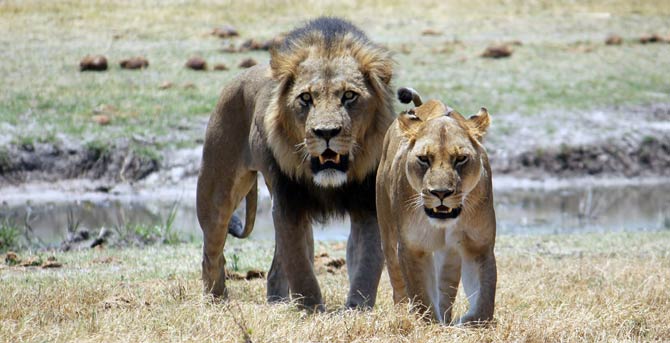Man-eaters – why animals attack humans?
For hundreds of years, predatory animals have been admired on the one hand as a symbol of courage and bravery, and on the other hand as a deadly threat. The latter opinion became popular especially after the spread of the press and colorful travel stories about exotic predators – man-eaters. This is especially true of big cats. What could be behind animal attacks on humans?
To begin with, it should be emphasized that humans are not a permanent element of the diet of any animal species. Only fish (e.g. large species of sharks or piranhas) and reptiles (crocodiles) treat humans as one of the many elements of their diet. However, it can be said that from their point of view we are probably no different from other animals.

Man is not the main ingredient of the animal menu
In turn, more developed animals, i.e. predatory mammals, such as wolves, do not treat us as the main element of their diet, and besides, a single animal is not a threat to humans.
The attacks of a pack of wolves on people, known from old stories, were, contrary to appearances, rare and were not made selectively. However, in the case of big cats, there are confirmed stories of individuals who like to hunt people. This only applies to tigers, leopards and lions. Some of the stories even have books and films. It is worth mentioning here that no other cats, even as big as jaguars, never eat human flesh under any circumstances and attack us only when they feel threatened or, for example, protect their young.

Man as a victim
If the man is compared to other animals, it turns out that he is fatally lost in the clash with potential enemies. He cannot run fast to escape a predator. He has no sharp teeth or claws to defend himself with and threaten the attacker with injuries. He is also too weak to engage in hand-to-hand combat.
Of course, our weapon is intelligence, which allows us to circumvent the limits and create tools with which we make up for the shortcomings in “weapons” – such as, for example, an ordinary sharpened stick.
Man is an easy prey
However, thousands or even millions of years ago, our ancestors did not have such skills. We know from the excavations that in terms of construction, they did not surpass us at all in their ability to defend themselves; they did not use weapons either, because they just had not invented it yet. So they were easy victims. What made them survive?

Why did people survive?
Based on contemporary observations, the explanation proposed by anthropologists in the 20th century seems likely. Well, in their opinion, one of the reasons for our success is the fact that human flesh is downright repulsive to predators. None of the more developed animals (that is, predatory mammals) attack humans as long as they have a choice – at least not for food. Nor has a species of predator specialized in hunting humans or apes developed.
This conclusion was confirmed, among others, by the famous anthropologist Louis Leakey (known, among others, as the promoter of Dian Fossey and Jane Goodall). He has repeatedly observed that lions and leopards, which after all often hunt monkeys, attack baboons far away from the herd, exposing themselves to the desperate fight of the victim and the quick reaction of the group. However, they rarely decide to attack a chimpanzee, which is much less dangerous than a baboon.
A chimpanzee is closely related to a human being, so one could conclude that the meat of a human being, just like closely related animals, simply does not taste predators. For the same reason, tigers in Asia do not attack orangutans, which have little or no ability to defend themselves against them. Yet there are stories of tigers, leopards and lions attacking and eating people. Why are they doing this?
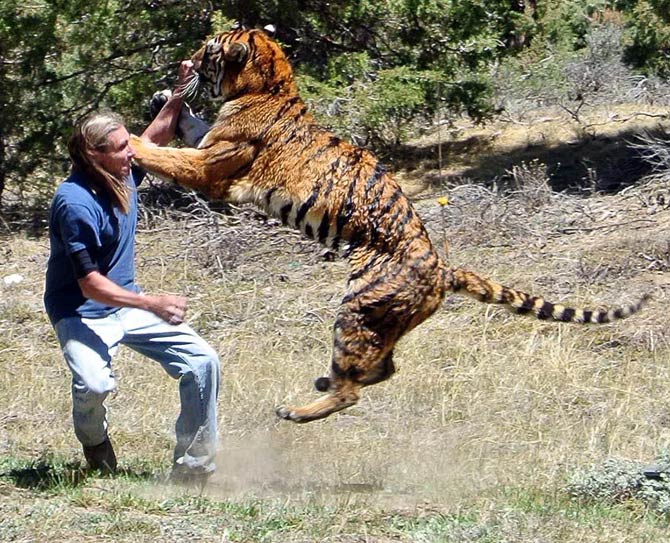
Tigers
In Asia, stories are popular about the bloodthirsty tigers that invade farms, kidnap animals, and finally attack people. In fact, it turned out that the tiger cannibalism had a complex and tragic cause. First of all, a healthy tiger does not go near farms. He attacks sheep or cattle only when he is too hungry or sick to try his luck elsewhere. However, he runs the risk of retaliation from shepherds guarding the flocks.
This is where the drama begins. If a tiger is shot, it has trouble hunting for a game that could satisfy its appetite. The worst situation is an animal that has been shot in the front paw, as it prevents it from hunting. In such a state, it cannot kill any large animal. In this situation, the only possible victim of the tiger becomes a relatively weak and slow person. It must be emphasized here that the life of such a man-eater tiger lasts very shortly, as it quickly falls victim to the organized inhabitants of the village. Knowing its habits, they can track and kill such a tiger.
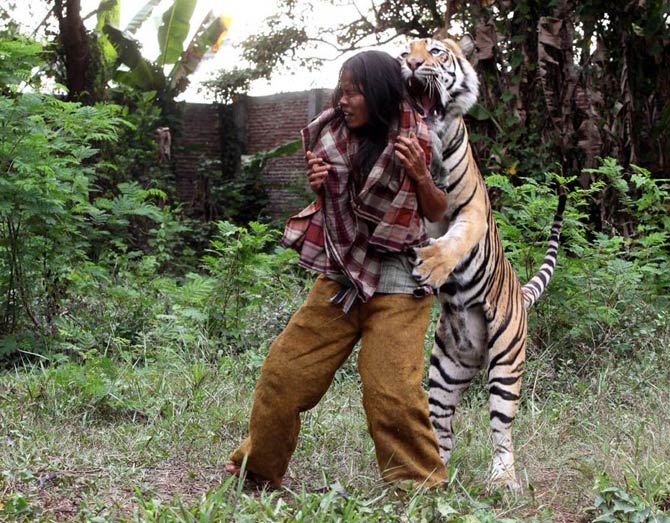
Leopards
Other famous man-eaters are leopards. They also do not consider man a delicacy. However, unlike the tiger, the leopard willingly sneaks into farms and attacks animals, including domestic dogs, which it considers a special treat. Also in this case, there may be a situation where a leopard is shot by a man defending his livestock. Such a disabled leopard becomes – like a crippled tiger – a man-eater because it is no longer able to successfully hunt any other prey.
The leopard, even mutilated, is still very clever and intelligent, and at the same time very secretive. That is why it happens that his “career” as a man-eater last for many years, because it is very difficult to entrap and kill this cat, even injured ones. Due to the smaller size of the tiger, the leopards-cannibals mainly attack children and women, which adds to their notoriety.
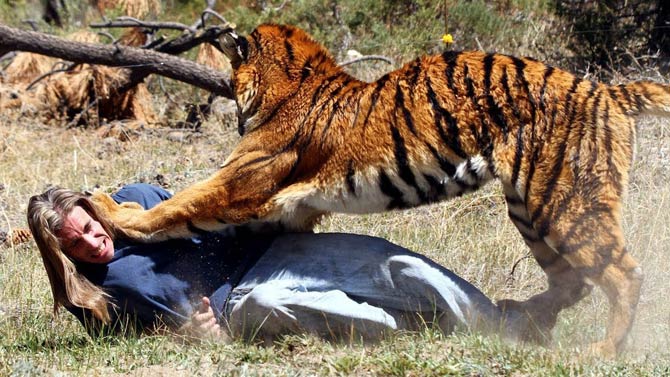
Attacks out of a desire for revenge and retaliation
It is worth mentioning here the rarely reported cases where leopards intentionally attacked people not for food, but driven by pure revenge. Incredible as it sounds, no other explanation has been found, for example, for the behavior of the leopard woman, which in the 1960s killed six people who had previously killed her kittens in front of her eyes.
Later, the same leopard woman repeatedly attacked people venturing into the forest – however, she never ate her victims, but only tearing them to pieces. Probably several dozen people fell victim. The story was described by the hunter Kenneth Anderson, who was deeply interested in the cases of man-eater predators and tried to understand the reason for their unusual behavior.
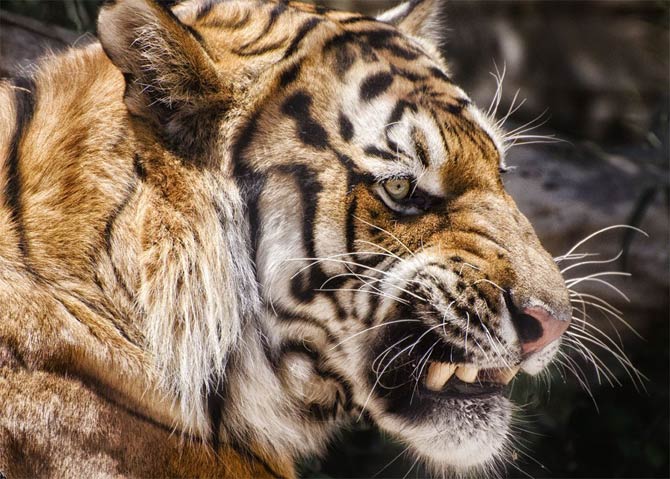
Lions
Lions are a completely different case. Unlike tigers and leopards, which hunt humans as a result of severe mutilation, the causes of lions cannibalize are usually natural. Only males are cannibals among lions. This happens most often when the younger specimen has defeated and exiled the older pack leader. Then the defeated one, who so far practically did not have to hunt (mainly females hunt among lions) is forced to settle for smaller and smaller prey – gradually he switches to rodents, frogs, and even locusts or termites. Finally, he himself becomes a victim, most often of a herd of hyenas.
Nevertheless, even this rarely turns a lion into a man-eater – further evidence that our meat is repulsive to predators. Sometimes, however, a starved lion decides to attack and eat a human. Then, something unusual occurs in other animals: Such a lion changes preferences and feeds almost exclusively on humans. Oddly enough, the observations showed that young and fully functional specimens are also cannibals among lions. An example of such strong and healthy animals was the famous “Tsavo man-eaters”, whose story was presented in the movie “The Ghost and the Darkness”.

Why do lions attack people?
The reason for this behavior of the lions is unknown. Particularly interesting seems to be the hypothesis put forward by the Belgian zoologist Jean-Pierre Hallet, who – being a great admirer of large cats – tried to find a rational explanation for their unusual behavior. Well, the scientist put forward the supposition that such behavior may have a background similar to human addiction. He found that some component of the human body affects lions similarly to the effects of psychoactive substances on humans. Therefore, if a lion attack and eats a human once, it will do so again and eventually become addicted to it.
The scientist did not specify what relationship in the human body could have such an effect on lions, nor did he provide any evidence for his hypothesis. However, there is a fact that proves its truth: lions, like leopards and tigers, do not like human flesh and avoid it whenever they can. So, if a lion begins to hunt humans on purpose, being fit enough to hunt down and kill another animal, it must have some benefit from it. This is reminiscent of the behavior of a person addicted to addiction, the satisfaction of which does not give him pleasure, but he cannot do without it.

Man-eaters – the norm or not?
As you can see, some tigers, leopards and lions can under certain circumstances be credited with being a man-eater. However, it should be emphasized that this behavior is not normal for these animals. The exact cause of it will never be known, as it would require research and observations which, for obvious reasons, will never be carried out. It is difficult to imagine that animals were deliberately mutilated or allowed to hunt people.
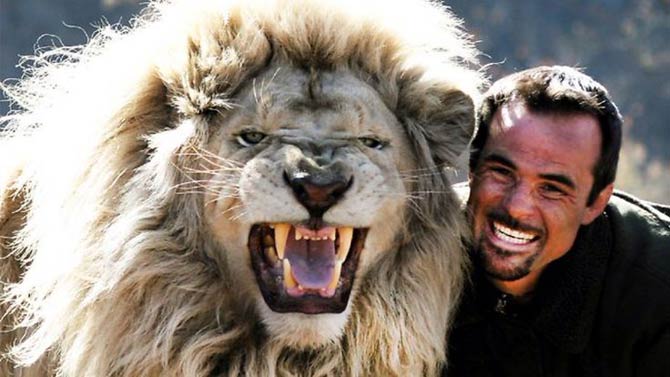
Man-eaters- interesting facts
- The stories of animals hunting for revenge, as described by Kenneth Anderson, have become the subject of intense research by biologists, as it showed that these predators are capable of experiencing higher emotions – both positive and negative. However, no unequivocal conclusions were drawn on this subject.
- Between 1959 and 1962, a group of leopards from the Bhagalpur area of India killed over 350 people. This is considered to be the most tragic activity of man-eaters in history.
- In India, it is popular to believe that a tiger, once it has tasted human flesh, can no longer live without it. This story is part of local folklore, but it surprisingly coincides with Hallet’s hypothesis about the addictive factor contained in the human body.
